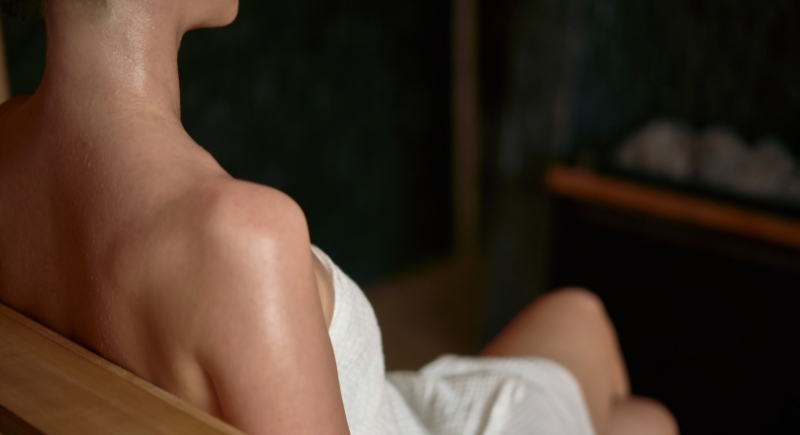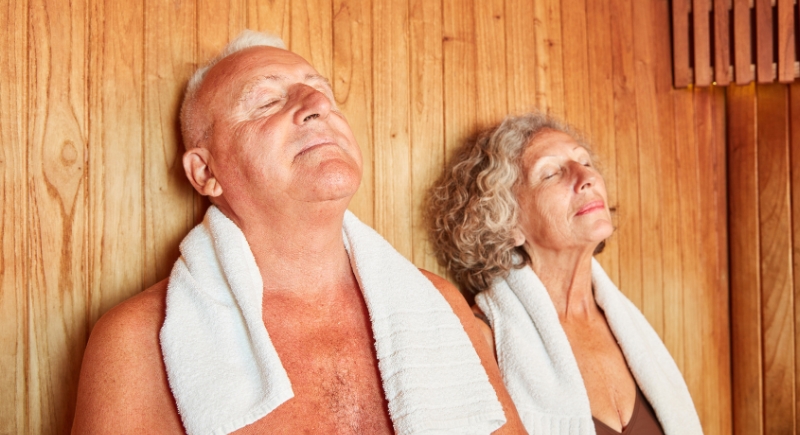Sauna Heat and Mixing Alcohol: The Deadly Combo Hiding in Your Spa Routine
People are drawn to saunas for obvious reasons. You step in, the heat wraps around you, and the stress of the day feels lighter with every breath. For centuries, different cultures have treated these spaces as more than just rooms of steam — they’ve been places to gather, reflect, and reset.
Now they’re showing up in modern life in all kinds of ways. Some of us see them at the gym, others at wellness spas, and in certain cities, even paired with nightlife. That overlap makes it easy to think a drink and a sauna go hand in hand. But before you mix the two, it’s worth asking what really happens when you do.
The Strain of Mixing Alcohol with Sauna Heat

Image via Canva/a.dl
Your body spends a lot of effort holding its temperature steady, and the hypothalamus is at the center of that work. Inside a sauna, heat drives your core temperature upward, the heart starts working harder, and sweat rolls out as the body scrambles to cool itself.
Alcohol, meanwhile, has a habit of making hydration harder. It acts as a diuretic, pulling water from your system before you’ve even added heavy sweating into the equation. Combine the two, and dehydration risk shoots up fast.
The heart and blood vessels are under strain as well. Alcohol tends to drop blood pressure, while sauna heat relaxes the vessels and speeds up the pulse. Research has shown this combination weakens the body’s ability to regulate heat and compounds the dehydration. The result is not just feeling light-headed. It can spiral into fainting or trigger dangerous shifts in heart rhythm. And fainting in a hot, slippery room carries its own hazards.
This isn’t just a theoretical risk. Finnish health records have connected alcohol to accidental sauna deaths, with national data reporting around 20 to 25 cases every year. The cardiovascular dangers also extend beyond accidents. Pre-sauna alcohol consumption escalates risks of heart complications, especially arrhythmias, due to the combined effects on blood pressure and circulation.
The Hangover Myth and the Safety Reality
Plenty of people step into a sauna the morning after drinking, convinced it will push the alcohol out of their system. The belief is simple: sweat it out, walk away clean.
That’s not how the body works. Nearly all alcohol is broken down by the liver, with only tiny amounts leaving through sweat, urine, or breath. On average, it takes about an hour for the body to process one standard drink, no matter how much you sweat. Sitting in the heat while alcohol is still present only raises the risks of dehydration, dizziness, and heart strain.
Even some recovery programs once leaned on the “sweat it out” idea, but specialists now reject it. Treatment centers stress that the real tools for recovery are hydration, nutrition, and rest. Saunas may feel restorative at the right time, but when used to chase off a hangover, they often leave people worse off.
Saunas Do Have Benefits

Image via Canva/Robert Kneschke
Saunas on their own carry clear advantages. Research in Japan on a low-temperature approach known as Waon therapy found improvements in heart function, exercise capacity, and quality of life for people with chronic heart failure. That study, published in the International Heart Journal in 2015 and led by Mitsuo Sobajima, added to a growing body of medical interest.
The benefits don’t stop there. A large Finnish cohort study, published in Age and Ageing in 2017, showed a link between frequent sauna use and a reduced risk of dementia and Alzheimer’s disease. Other findings point to positive effects on circulation and blood pressure. What unites all of this evidence is the condition that the sauna is used while sober.
For anyone seeking relaxation, specialists recommend a practical routine: limit sessions to about 10 to 15 minutes, drink water before and after, step out for breaks, and save alcohol for later, once the body has cooled and rehydrated. That way the sauna delivers the benefits without the added risks.